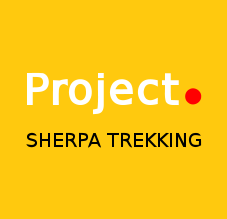There are people of different cast and religion in Nepal. The population is basically composed of about a 101 ethnic groups speaking over 92 languages. The distinction in caste and ethnicity is understood more easily with a view of customary layout of the population.Though, there exist numerous dialects, the language of unification is the national language, Nepali. Nepali is the official language of the state, spoken and understood by majority of the population. Multiple ethnic groups have their own mother tongues. English is spoken by many in Government and business offices and many schools in the country follow this system.
In the northern region of the Himalayas are the Tibetan-speaking groups namely Sherpas, Dolpa-pas, Lopas, Baragaonlis, Manangis. The Sherpas are mainly found in the east, Solu and Khumbu region.
Several ethnic groups live in the middle hills and valleys. Among them are the Magars, Gurungs, Tamangs, Sunuwars, Newars, Thakalis, Chepangs, Brahmins, Chhetris and Thakuris.
The main ethnic groups in Terai are Tharus, Darai, Kumhal, Majhi and other groups. They speak north Indian dialects like Maithili and Bhojpuri. Owing to the fertile plains of Terai, most inhabitants live on agriculture. There are, however, some occupational castes like Majhi (fisherman), Kumhal (potter) and Danuwar (cart driver).
Ethnic Diversity in the Kathmandu Valley:
Kathmandu Valley represents a cultural cauldron of the country, where, people from varied backgrounds have come together to present a melting pot. The natives of the Kathmandu Valley are the Newars. Newari culture is an integration of both Hinduism and Buddhism. The Newars of Kathmandu Valley were traders or farmers by occupation in the old days.

